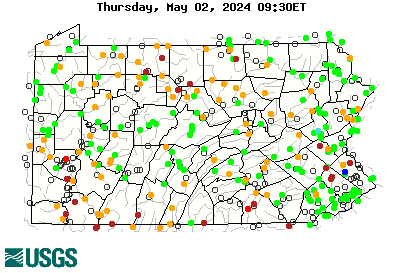Greetings! I grew-up living and fishing for native brook trout in North Central PA in Elk County, in a little town called Benezette. It's just Southwest of St. Mary's. After a career in the military, I now live and work in Virginia, but I'm fortunate to have a cabin in Benezette, Cabin Creek Lodge. I fish in a stream called Trout Run. It's not stocked and contains primarily brooks with few browns. The stream gets little to no 'heat'. Until now, I've been a spin reel fisherman. After some wishful statements, my wife got me a very nice Orvis rod and reel for Christmas. She also got me a fairly comprehensive 'how-to' book from Orvis and a fly tying kit with book.
After all of the reading, I now have 'barely' all the basics down and I plan on hitting the stream April 18th.
I've just tied my first fly (included in the kit), a Wooly Bugger. It looks great and it's Olive in color. I even placed a bead of cement on the head for durability.
My question is this; what flys will really WORK in this stream? The books tells you to observe the aquatic entomology and make decisions, but unfortunately, I'm not in the area and want to be ready for the spring season before I make the trip. I have a few flies that mimic mayfly and dradonfly nymphs. Is there any dry flies that will work at this time of year? What is the best size? Should I use a strike indicator (it will probably help me avoid a ton of snags)? Does anyone have experience in this area?
Any and all help will be GREATLY appreciated. :-D
After all of the reading, I now have 'barely' all the basics down and I plan on hitting the stream April 18th.
I've just tied my first fly (included in the kit), a Wooly Bugger. It looks great and it's Olive in color. I even placed a bead of cement on the head for durability.
My question is this; what flys will really WORK in this stream? The books tells you to observe the aquatic entomology and make decisions, but unfortunately, I'm not in the area and want to be ready for the spring season before I make the trip. I have a few flies that mimic mayfly and dradonfly nymphs. Is there any dry flies that will work at this time of year? What is the best size? Should I use a strike indicator (it will probably help me avoid a ton of snags)? Does anyone have experience in this area?
Any and all help will be GREATLY appreciated. :-D





